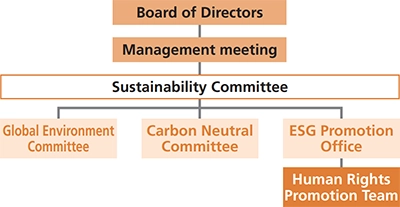Enhance Human Capital Management
We consider use of human capital through inspiring the best from each and every employee and deploying our employees as corporate strengths to be essential to the Mitsubishi Steel Group’s sustained growth. Toward these ends, we promote sustainability initiatives within the organization with an emphasis on human resource development, diversity, and workstyle reforms
Improving employee engagement
To realize human capital management, we continually run through the cycle illustrated at right every year, seeking to realize higher productivity and innovation by building an environment in which all employees can demonstrate their capabilities to the fullest, by promoting reforms led by the management team.
To realize our ideal vision for 2030, we are promoting various measures to implement human capital management. At the same time, we are promoting continual improvements by holding townhall meetings between top management and those at various levels of the organization to collect opinions and conducting evaluation and analysis through engagement surveys.
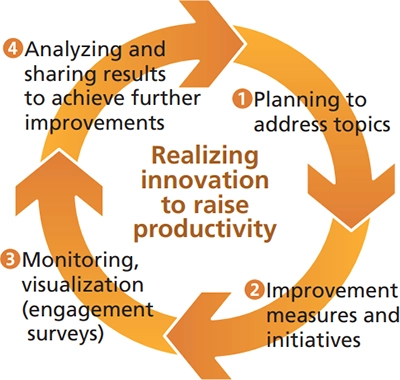
Planning to address topics
The ideal vision for 2030 in the MSM Group’s 2023 Mid-term Business Plan for the years FY2023–2025, “Leveraging our people and technologies to continue to succeed in a time of change,” identifies investing in human resources as one of its four basic policies.
We will realize higher productivity and innovation by promoting the following measures under the Mid-term Business Plan.
Creating workplace environments for leveraging our people
- Transformation into an organization characterized by high levels of time per- formance through digital transformation (DX) and operational streamlining
- Building a more comfortable working environment by enhancing paid vacations, childcare programs, etc.
- Enhancing and improving efforts to learn about employee satisfaction through engagement surveys
Developing systems for leveraging our people
- Reviewing HR evaluation systems to increase employee motivation and eager- ness to take on new challenges (enhancing feedback from evaluation and promoting the internal startup program)
- Providing opportunities for reskilling based on HR requirements (supporting lifetime learning)
- Developing autonomous human resources (improving HR quality) by enhancing programs that support earning official qualifications
Flexible creativity powered by diverse human resources
- Developing workplaces to enable more women to work in plants and training to promote women in the workplace
- Leveraging diverse knowledge and ideas through active midcareer hiring
- Realizing global exchange of human resources through means such as employ- ing staff hired overseas in Japan
Increased investment in human resources (education, support for earning official qualifications, enhancement of employee benefits)JPY 500 M over the three-year period of the Mid-term Business Plan
Improvement measures and initiatives
We’re implementing various initiatives to build comfortable working environments in which employees can do rewarding work.
Revising wages to record-high levels
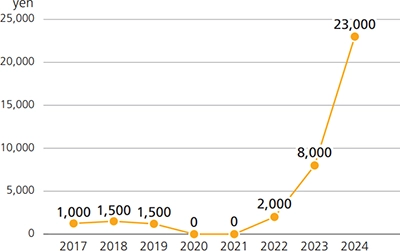
In the 2024 spring wage negotiations, we accepted the union’s demand for a wage increase of 23,000 yen (on average per union member) in full. This is the highest wage increase in history. Combined with regular raises, it will result in an increase of approximately 9% in pay. We also raised pay by 8,000 yen last year (including inflation adjustments), which combined with regular raises resulted in an increase of approximately 13% in pay.
New Tsurugasaki Dormitory built to secure human resources (Mitsubishi Steel Muroran Inc.)
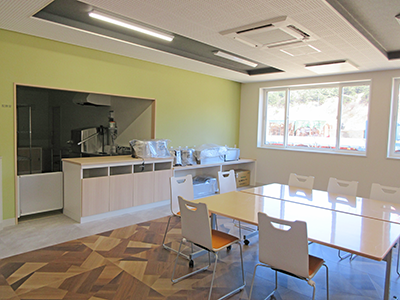
The new Tsurugasaki Dormitory for single employees has been completed in Miyukicho, Muroran.
Fully equipped with beds, air-conditioning, and other facilities, the new dormitory’s comfortable living environment for residents includes a dining hall, meeting rooms, and affordable breakfast and dinner.
Working environment improvements in manufacturing workplaces

Last year’s engagement survey made it clear that the Company faces major issues regarding workplace environments—particularly the need to improve working environments in manufacturing workplaces. In response, we established an additional budget and took measures to address heat in manufacturing workplaces, including coolers, fans, and thermal insulating coatings.
Monitoring, visualization (engagement surveys)
Since FY2023, we’ve carried out engagement surveys intended to visualize and monitor employee expectations and evaluations.
The first survey in FY2023 made it clear that the Company has weaknesses on the following points:
● Workplace environments (facilities, equipment) ● Communication between superiors and subordinates and subordinate development
Based on analysis of these survey findings, we’re promoting efforts to improve employee engagement centered on improvements on the issues identified. (See “Analyzing and sharing results to achieve further improvements” for details.)
The second engagement survey was carried out through July and August 2024.
Investments in human resources, as called for in the Mid-term Business Plan, have had some effects, including major improvements in percentages of employees giving positive answers to the survey questions.
Question: Do you agree that measures implemented in FY2023 have increased investment in human resources beyond that at the time of the previous survey (August 2023)?
⇒The percentage of employees giving positive answers (“strongly agree ,” “agree”) rose sharply to 68%.
While the overall score also improved slightly from last year, it remains at a level that cannot be called satisfactory. We believe further efforts are needed. The issues of workplace environments (facilities, equipment) and communication between superiors and subordinates and subordinate development, identified in the previous survey, remain important issues. We plan to maintain efforts to achieve improvements regarding these issues by implementing various measures and periodically assessing the results
Analyzing and sharing results to achieve further improvements
Sharing results
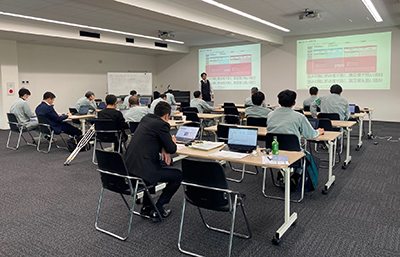
Results of the engagement survey are reported to the management meeting and the Board of Directors and summarized in internal bulletins. In addition, managers participate in separate meetings to share engagement survey results at individual facilities, and opportunities are provided for outside experts to explain matters such as how to interpret survey results and how to draft action plans.
Furthermore, action plans drafted by individual sections are carried out and focused surveys are carried out to collect opinions on individual items. Evaluation of results and other means are used to promote efforts not just across the Company but in individual sections as well, with the goal of achieving solutions to the issues identified in the surveys.
Efforts toward improvement
We implemented the following efforts to address issues identified in the FY2023 survey.
- 1Workplace environment (facilities, equipment)
The need for environmental improvements, including measures to combat summer heat and improvements to parking, bathing, and other facilities, was cited commonly in survey results, chiefly at manufacturing facilities. In response, in FY2024 we established a budget of approximately 500 million yen to fund facility and environmental improvements at each business site. We’re making progress on improvements to facility environments.
- 2 Communication between superiors and subordinates and subordinate development
Through training using role-playing, we teach effective communication to promote subordinate autonomy and maintain motivation. We’re also identifying issues based on measurements of individual levels to improve the quality of management to strengthen development of subordinates.
Furthermore, through meetings to share results, individual managers prepare action plans to address priority issues in their sections, and improvements are being promoted in line with these plans.
Systems to support the improvement cycle (opportunities for dialogue between the Company and employees)
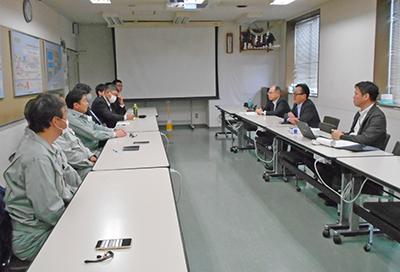
We’re making progress on improving engagement by actively establishing opportunities for open dialogue between the Company and employees.
In addition to existing opportunities for regular dialogue between the labor union and the Human Resources Department or individual business sites, we’re building a general livelihood inspection program, a system under which the labor union submits employee requests to the Company in writing.
In addition, since 2022 we’ve held townhall meetings intended to collect feedback directly from employees regarding matters such as their everyday concerns and requests. The views and requests brought up in these meetings, in addition to engagement survey results and other feedback, are incorporated into improvement measures, to enable more effective measures to increase employee engagement.
Human resource strategy and development
We’ve established the ideal vision for 2030 of “Leveraging our people and technologies to continue to succeed in a time of change.” Our current 2023 Mid-term Business Plan covers the preparatory period for moving toward this ideal vision.
To achieve the ideal vision—particularly in the area of growing strategic businesses—it will be essential to secure and develop the human resources needed.
Full-fledged strategic business development is planned for the periods of the next Mid-term Business Plan and beyond. During the period of the current Mid-term Business Plan, as the preparatory period, we will make progress on building the foundations of human resource development to support growth, through means including more active midcareer hiring and education.
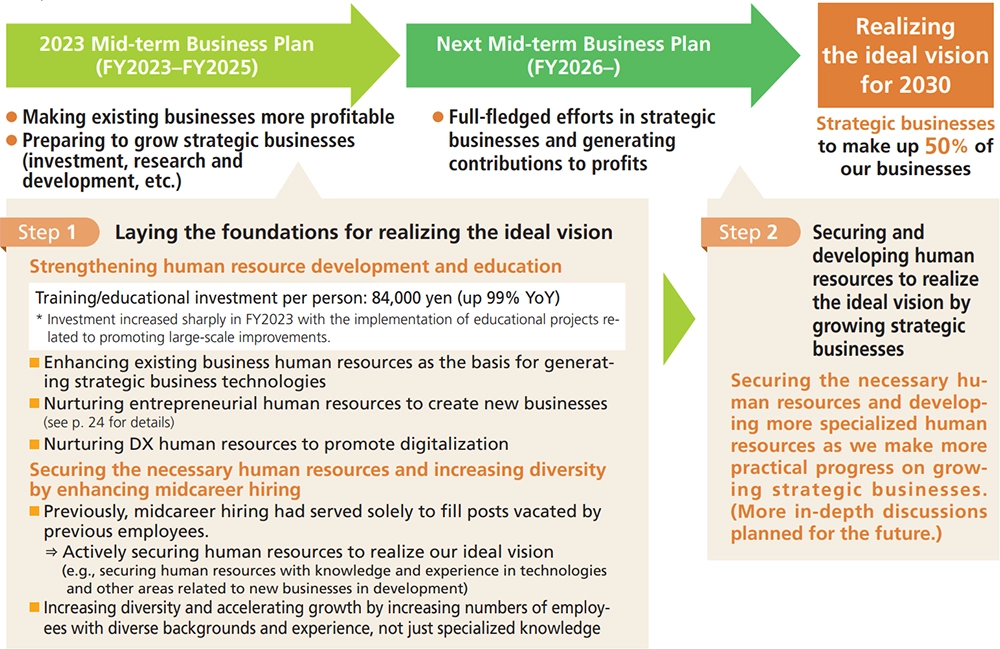
Human resource education
Human resources represent the wellspring of any company’s sustained growth. Accordingly, our human resource development efforts focus on fostering and making the most of our human resources and allowing them to achieve a true sense of growth and self-realization. We have also developed competency maps to make clear the kinds of human resources the Company needs and to describe the actions and qualities required at each level. We will continue to implement training by job level to allow employees to meet the required levels indicated in the competency maps; develop systems for promoting reforms in corporate culture and awareness; and implement training in line with our education structure.
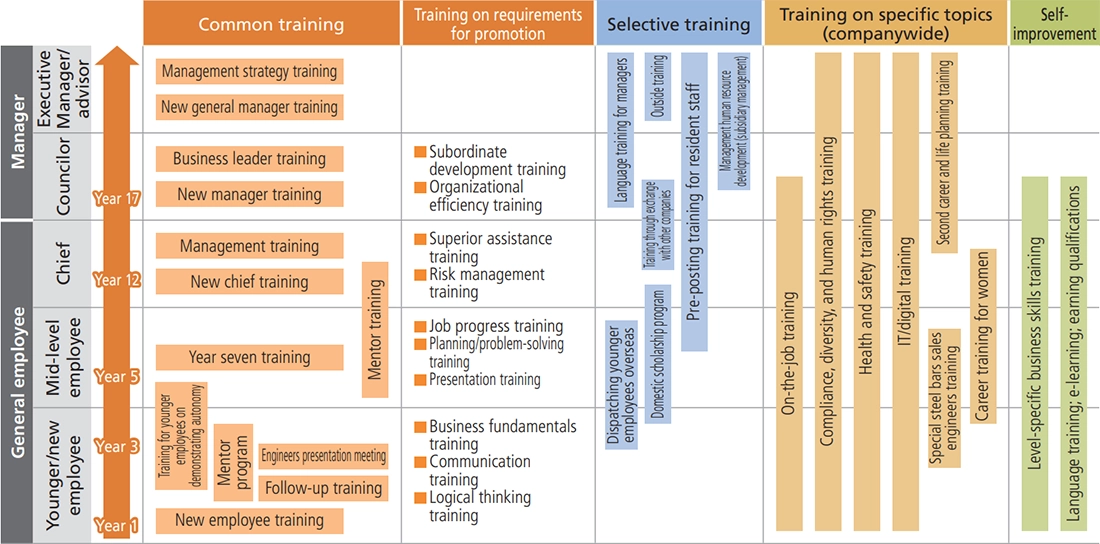
Managerial human resource development
Strengthening subordinate development capabilities at the management level
One human resource management issue concerns the need to improve managerial capabilities and to develop systems that allow the demonstration of these capabilities. As first steps under the Management Skills Improvement Project, this fiscal year we’re implementing an action learning program that addresses communication and management skills tailored to individual team members for managers in corporate and sales sections. Next fiscal year, we plan to expand this program to managers in business sections as we strive to build systems to strengthen overall management and draw out the maximum capabilities of each and every employee.
Efforts to support employee career building
Employees in their fifties and beyond are expected to play even more active roles from now on. Accordingly, we held career interviews with the participation of outside career consultants for employees aged 55 and older, intended to review their careers, recognize anew their individual strengths and motivations, and help them to play even more active roles in the future.
We plan to continue supporting active employee career building by expanding opportunities for self-actualization and external resources.
Industry-academy collaboration initiatives
We participate in the Iron and Steel Institute of Japan’s program of special university lectures by corporate management, lecturing to students on subjects such as uses of special steel bars, their manufacturing process, and our business development and research and development case studies.
We’re also carrying out industry-academy collaboration in which the Research & Development Center plays a central role. We’re moving forward with joint research and development with universities from across Japan that offer synergies in technological development, with the goal of improving our technological development capabilities.
Furthermore, to promote systematic development of human resources who will lead Mitsubishi Steel in the future, we’ve begun a program intended to enable employees to earn doctorates by attending graduate school while remaining affiliated with the Company.
Human resource development initiatives for younger employees
Year Seven training
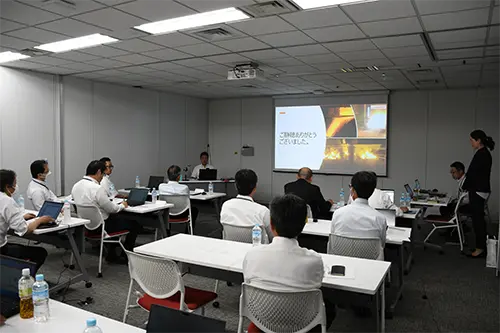
Despite progress on developing systematic training programs for new hires, younger employees, older employees, and managerial personnel, the lack of periodic training for mid-level personnel has been identified as an issue. To address this issue, we hold meetings in which employees in their seventh year with the Company make presentations to management on their current duties and future challenges.
We will continue holding these meetings in the future to strengthen morale among mid-level personnel.
Professional human resource development
Presentation meeting for business improvements in engineering
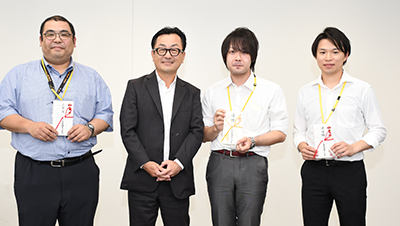
In response to the lack of opportunities for presentations on results following engineers’ presentation meetings for new hires, a presentation meeting for business improvements was held for engineering staff. This opportunity to gain a sense of accomplishment involves reporting on business improvements at specific workplaces. We plan to continue holding presentation meetings to achieve business improvements, encourage exchange across sectional boundaries, and strengthen motivation to pursue improvements.
Global human resource development
We offer a training program intended to develop more human resources capable of succeeding in international business. This program provides employees planned for posting abroad with training on foreign languages, basic business norms and practices, and intercultural understanding required for overseas workplaces
We also provide support for language study, to raise the level of employees’ English skills.
Support for self-improvement efforts
We have adopted e-learning as an educational tool for self-improvement. Since it is compatible with smartphones, this e-learning enables employees to learn in their free time with no restrictions in terms of time or place. Employees can choose from a wide-ranging curriculum, including classes on technologies and skills, practical computing, and digital transformation (DX), in addition to language skills, mental health, and other management topics. To continually encourage employees to take part in this program, the secretariat office periodically issues e-learning bulletins.
We have established a program to support employees seeking to earn official qualifications, with the goal of helping them to achieve personal and professional growth by enhancing their abilities and specialized knowledge.To help employees grow and acquire the skills they need, we are expanding the range of official qualifications eligible for support and developing programs to support learning to earn qualifications. Those who have earned official qualifications are eligible for financial incentives in amounts specified for the type of qualification. We will continue to provide growth opportunities and broaden the base of our support programs for employee growth.
New-business creation challenge program now underway
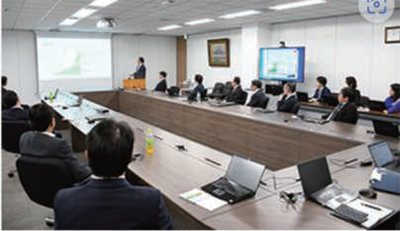
The new-business creation challenge program is an open-enrollment training program that was launched in FY2023 as part of efforts to create new businesses. This program seeks to train entrepreneurial human resources capable of identifying issues and proposing their own solutions. It seeks to provide trainees with the expertise needed to advance their new business ideas to the practical business stage, with support from outside experts.
In FY2023, its first year, the program received 25 proposals. Through a process of training and multiple auditions, three participants who made it to the final screening stage reported to management on their proposals. Plans call for those making the proposals to play central roles in testing the feasibility of their business models, with the goal of bringing them to fruition as new businesses.
Increasing diversity
We have identified diversity and inclusivity initiatives as part of our management strategies to be a strong enterprise that can realize sustained growth. These initiatives are intended to realize a company in which the full spectrum of our diverse employees can contribute a variety of ideas and experiences, demonstrate their abilities to the fullest, thrive in rewarding workplaces, and take pride in what they do.
Building an environment in which a diverse group of employees can thrive
We’re making continual efforts to promote awareness and improve the corporate culture, including through training on diversity and human rights. In addition to enhancing systems to help employees balance work with childcare, long-term care for family members, and their other responsibilities, we are also promoting new work styles such as remote work, flextime, and staggered working hours.
In addition, since FY2022 we’ve aimed to ensure that employees take at least 75% of their annual paid vacation time. In several ways, including the Plus ONE Campaign* that makes it easier to take paid vacation on days before and after holidays, we are also striving to build a workplace culture that makes it easier for employees to take paid vacation. In FY2023, we achieved the target of employees taking at least 75% of their annual paid vacation time.
Promoting women in the workplace
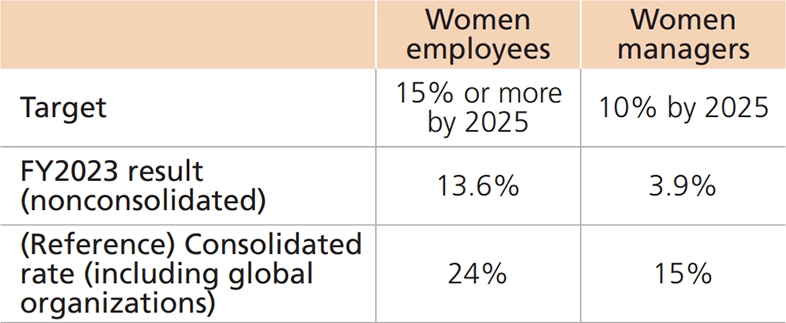
In April 2021 the Company established an action plan under the Act on the Promotion of Women’s Active Engagement in Professional Life, for the period through the end of FY2025. We’re implementing various measures under this plan. While we’re far short of our target percentage of women managers, the percentage of managerial candidates accounted for by women has improved sharply—from 1.8% in FY2022 to 8.3% as of April 2024—clear signs of progress toward developing the next generation of women managers. We’re also enhancing systems to support diverse work styles, including extending the period of childcare leave, expanding the ranks of those eligible for shortened working hours, and support for use of temporary childcare programs. In recent years, we’ve sought to increase the percentage of men taking childcare leave, for example by encouraging male employees whose spouses have given birth to take the leave and publishing in Company bulletins the experiences of employees who have taken the leave. Numbers of male employees taking childcare leave for lengthy periods of three months to one year (not just short-term leave immediately after childbirth) are increasing steadily. In the future, we will continue to implement measures such as promoting awareness of these systems and holding seminars to encourage understanding of them among all employees.
Acquisition of Kurumin Certification
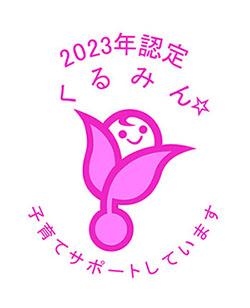
This past November, we earned Kurumin Certification under the Act on Advancement of Measures to Support Raising Next-Generation Children.
「This certification is awarded by the Minister of Health, Labour and Welfare to companies that meet certain criteria for supporting employee childrearing for workplaces that make it easier to balance work and family life and certify those companies as “childcare support companies.”
We earned this certification in recognition of our efforts through now to increase the percentage of men taking childcare leave, permeate understanding of balancing childcare with work, and encourage employees to take annual paid vacation while reducing overtime work.
We plan to continue enhancing efforts to develop workplaces in which all employees can demonstrate their capabilities to the fullest through measures that facilitate not just employee childcare, but measures that provide all employees with the flexibility needed to choose comfortable working environments.
Promotion of use of childcare leave programs
To support diverse workstyles, we have sought to enhance childcare leave programs in various ways, including lengthening childcare leave, expanding the scope of those eligible for reduced working hours for childcare, and providing subsidies for temporary childcare services. We distribute materials to summarize childcare leave programs, procedures, and schedules and strive to address concerns about the programs.
Thanks in part to amendments to related laws, increasing numbers of men are taking childcare leave as well. Efforts such as publishing the comments of employees taking childcare leave in the Company bulletin, intended to encourage men to take childcare leave when their spouses give birth, aim to increase rates of taking the leave and encourage employees to take advantage of diverse work styles. We remain committed to building a corporate culture that allows each and every employee to experience truly rewarding work in various ways, including improving workplace environments and promoting more efficient work.
Childcare Leave Regulations
| Leave period | Extendable up to the end of the fiscal year which the child turns 3 years old |
|---|---|
| Actions taken if the employee does not wish to take childcare leave | Exemption from overtime work upon request until the child reaches the age of 3 years |
| Nursing leave for children | Until the 6th year of primary school : Up to 5 days/year for one child; 10 days/year for 2 or more children |
| Shortening of prescribed working hours | Until the 3rd year of primary school: Prescribed working hours may be shortened to 6 hours/day (shifts adjusted on a case-by-case basis) |
| Exemption from overtime work | Exemption from overtime work until the child reaches the age of 3 years |
| Limitations on overtime work | No more than 24 hours/month, 150 hours/year, until the child begins primary school |
| Limitations on late-night work for childcare purposes | Exemption from late-night work upon request until the child begins primary school |
Measures to prevent harassment
In response to amendments to the Act on Childcare Leave, Caregiver Leave, and Other Measures for the Welfare of Workers Caring for Children or Other Family Members in April 2022, we are encouraging male employees to take paternity leave through means including training for all employees on prevention of paternity harassment.
We have prepared different training programs for managers and for ordinary employees to promote efforts to prevent harassment among the workforce.
Employee health and safety
Safety initiatives
Based on the “Safety First” principle, the Group strives to build safe, healthy, and comfortable work environments for its employees. Under the Back to Basics slogan, the Group creates numerous opportunities to promote safety activities based on heightened risk sensitivity and a return to the fundamentals.
Our responses
In addition to existing safety patrols, we’re striving to promote safety awareness and improve technical capabilities through contests and in other ways.
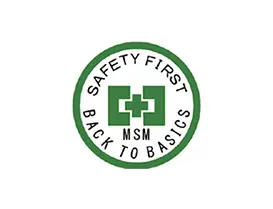
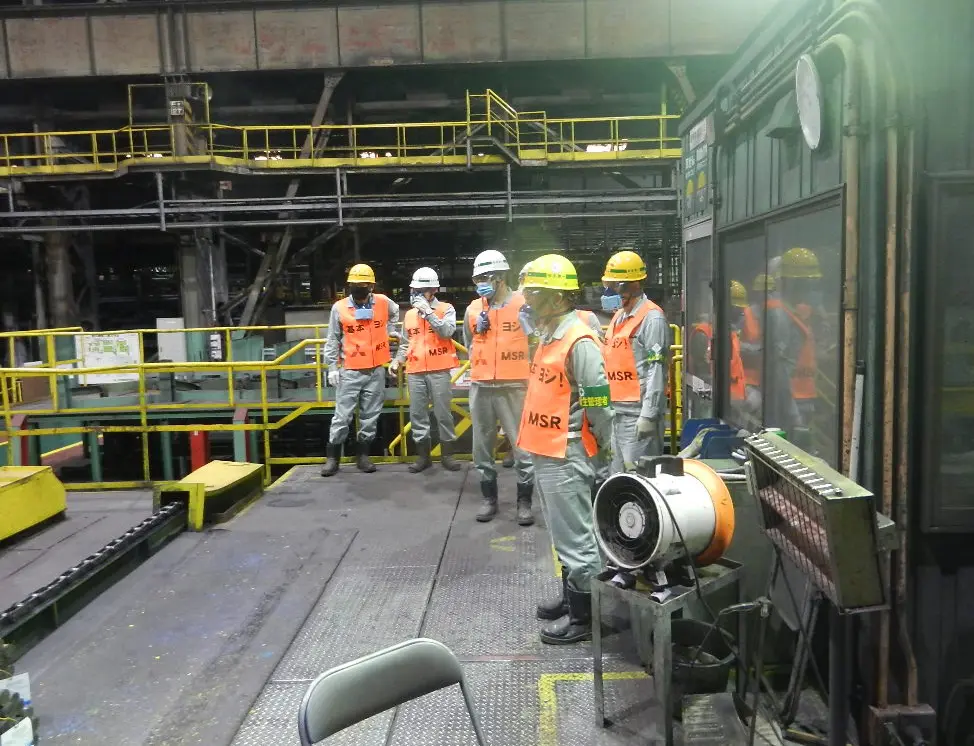
safety patrol
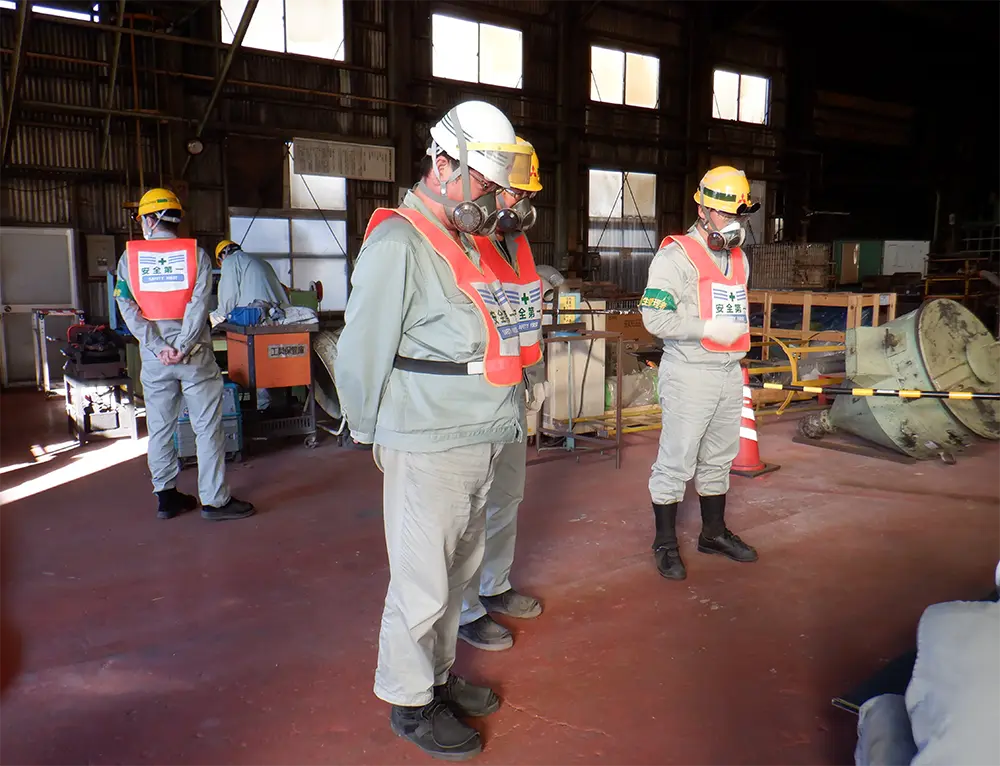
safety patrol
Accident frequency
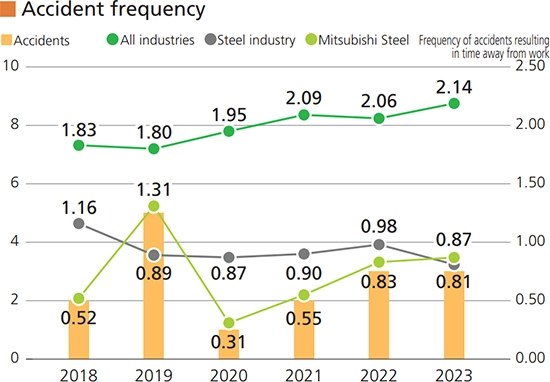
- ※Frequency of accidents resulting in time away from work (number of accidents resulting in time away from work per million hours)
Calculated from total data for Mitsubishi Steel Mfg. Co., Ltd., Mitsubishi Steel Muroran Inc., and Mitsubishi Nagasaki Machinery Mfg. Co., Ltd
Employee meetings for safety
Periodic meetings are held among employees in charge of safety at business sites in Japan, including Group companies. In those meetings, employees exchange opinions on safety and strive to raise the levels of safety management and share information and awareness of related issues.
Safety meetings
We have begun holding safety meetings following accidents to allow other business divisions and the secretariat to investigate reports from the business division involved concerning the causes of and responses to the accident. These meetings seek to enhance organization-wide safety efforts through communication across sectional boundaries
Examples of individual facilities’ safety activities
Five S contest
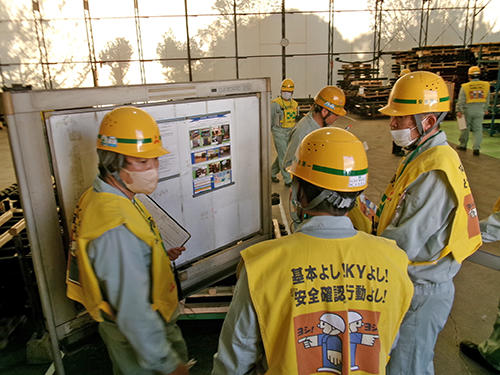
Regular five S contests are held to promote autonomous safety and to ensure that safety fundamentals based on the five S activities take firm root.
Forklift competition
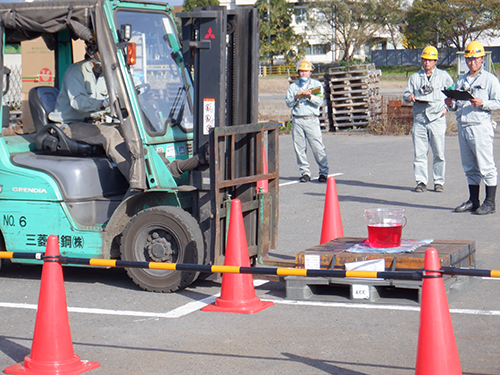
The annual forklift competition is intended to improve forklift drivers’ technical skills and promote awareness of safe operation.
KYT contest
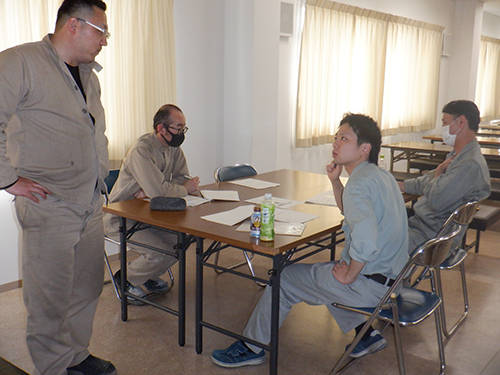
The annual KYT contest boosts employee skills in predicting danger in everyday work.
Slinging contest
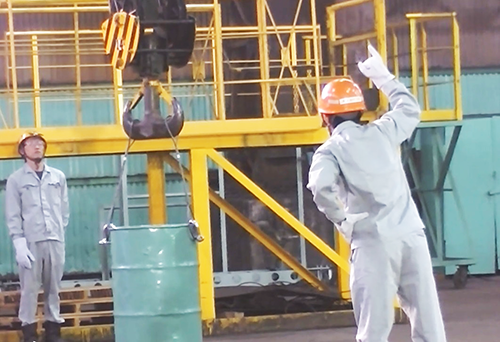
The annual slinging contest is intended to improve participants’ skills at slinging work (moving heavy loads using cranes), a dangerous task that requires special skills.
Employee health
One element of the Mitsubishi Steel Group’s Corporate Philosophy states, “We’re committed to creating a pleasant and vigorous work environment, embracing a diverse workforce with various talents to achieve their full potential.” We implement activities intended to realize this philosophy, seeking to be a company in which our diverse group of employees can work with peace of mind and take on challenges with a sense of vitality.
While taking steps to prevent worsening and reoccurrence of conditions for employees identified to have health issues in regular checkups or complete medical examinations, employees with mental health concerns, and employees being treated for diseases, we are also promoting prevention of lifestyle-related illnesses to help healthy people stay healthy, as we group and respond to health risks by category.
Health Management Policies
- 1Prevention, early detection, and treatment of disease
Together with efforts to prevent disease, we encourage employees who have received health checkup results calling for follow-up examinations or treatment to take the steps needed and monitor their progress.
- 2Preventing infectious disease
We strive to prevent infectious disease among employees through sanitary management.
- 3Mental health measures
We're committed to building more positive workplace environments by responding appropriately to mental health issues through stress checks.
- 4 Health improvement measures
We implement various health improvement measures, including providing opportunities for nutritional improvements and exercise.
Promotion structure
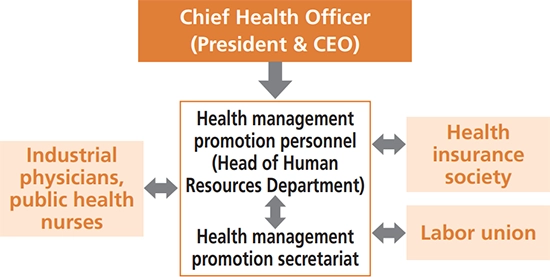
Respect for human rights
The Detailed Rules for Mitsubishi Steel Manufacturing Group Corporate Code of Conduct states, “The MSM Group respects human rights, personality and diversity, and does not engage in discrimination. We respect employees, and secure a safe and comfortable working environment, while also aiming to maintain and improve our corporate vitality.” In line with these principles, we take action based on respect for human rights and strive to create workplace environments in which all individuals can demonstrate their abilities to the fullest extent. To ensure the respect for human rights demanded of businesses, we’re proceeding with the procedures identified in the Japanese government’s Action Plan on Business and Human Rights.

Establishment of the Human Rights Policy
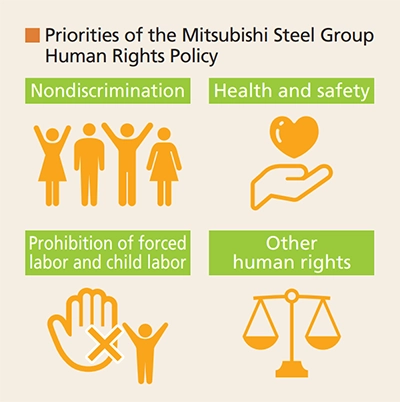
The Group’s Corporate Policy calls for Maximizing Human Capital. We established the Mitsubishi Steel Group Human Rights Policy in 2022 based on the conviction that regard for human rights is fundamental to business activities. This Policy was prepared based on the United Nations Guiding Principles on Business and Human Rights. It serves as the highest-level policy concerning human rights, under which we fulfill our responsibility to consider the human rights of all stakeholders involved in our business activities. Under “3. Obligation to respect human rights,” the Policy identifies the following responsibilities to society:
Human rights due diligence
We launched human rights due diligence efforts for domestic subsidiaries in FY2022 and for overseas subsidiaries in FY2023. The results indicate no serious violations in the Group in Japan or overseas. In the category of other risks, we did identify cases such as inadequate facilities at some subsidiaries and inadequate procedures to check various types of personal information prior to employment based on overseas business practices. In addition to continuous monitoring, we plan to survey suppliers in FY2024 and beyond. Since FY2019, we’ve used CSR surveys to check the status of human rights risks, including those related to child labor and forced labor, at suppliers. No serious violations were identified.
Remediation mechanisms
We’ve established an internal whistleblowing hotline, a harassment hotline, and other complaint resolution systems. In FY2024, we will continue considering establishing a separate hotline for human rights inquiries.
Roadmap for human rights initiatives since FY2023

Initiatives for respecting human rights
Procurement policy, promoting CSR procurement
We conduct our procurement activities under the Basic Procurement Policy of the Mitsubishi Steel Group and “Promoting CSR Procurement.” Under these, we prohibit all kinds of discrimination, child labor, and forced labor and give consideration to the development of the work environment, as well as safety and health. We also request the understanding and cooperation of our business partners.
Harassment surveys and education
In FY2023, we interviewed more than 200 randomly chosen employees about the state of compliance. The results indicate some cases that could be considered harassment. In response, we carried out training for all employees on the subject of harassment. This training included familiar examples of potential harassment based on employee feedback.
Measures to permeate understanding of the relationship between business and human rights in the organization
We have long included human rights training as part of training for new employees and other training programs. However, as all employees of Group companies underwent human rights training since FY2022, we saw the need to promote understanding of the objectives of Company human rights initiatives. Accordingly, we have provided training on the relationship between busine activities and human rights. Some 1,300 employees in total from all Group companies have undergone this training (for an 87.5% training participation rate), and their average understanding of the subject has been graded at 4.03 on a five-point scale.
International benchmarks and human rights issues related to our businesses
As a manufacturer of special steel bars and products including parts used in automobiles, we operate in two of the five industries assessed by the Corporate Human Rights Benchmark (CHRB): the extractives sector and the automotive manufacturing sector. We’re pursuing human rights due diligence efforts while remaining particularly conscious of high-risk human rights issues (such as those of child labor and forced labor) in each of these sectors.
Mitsubishi Steel’s human rights promotion structure
